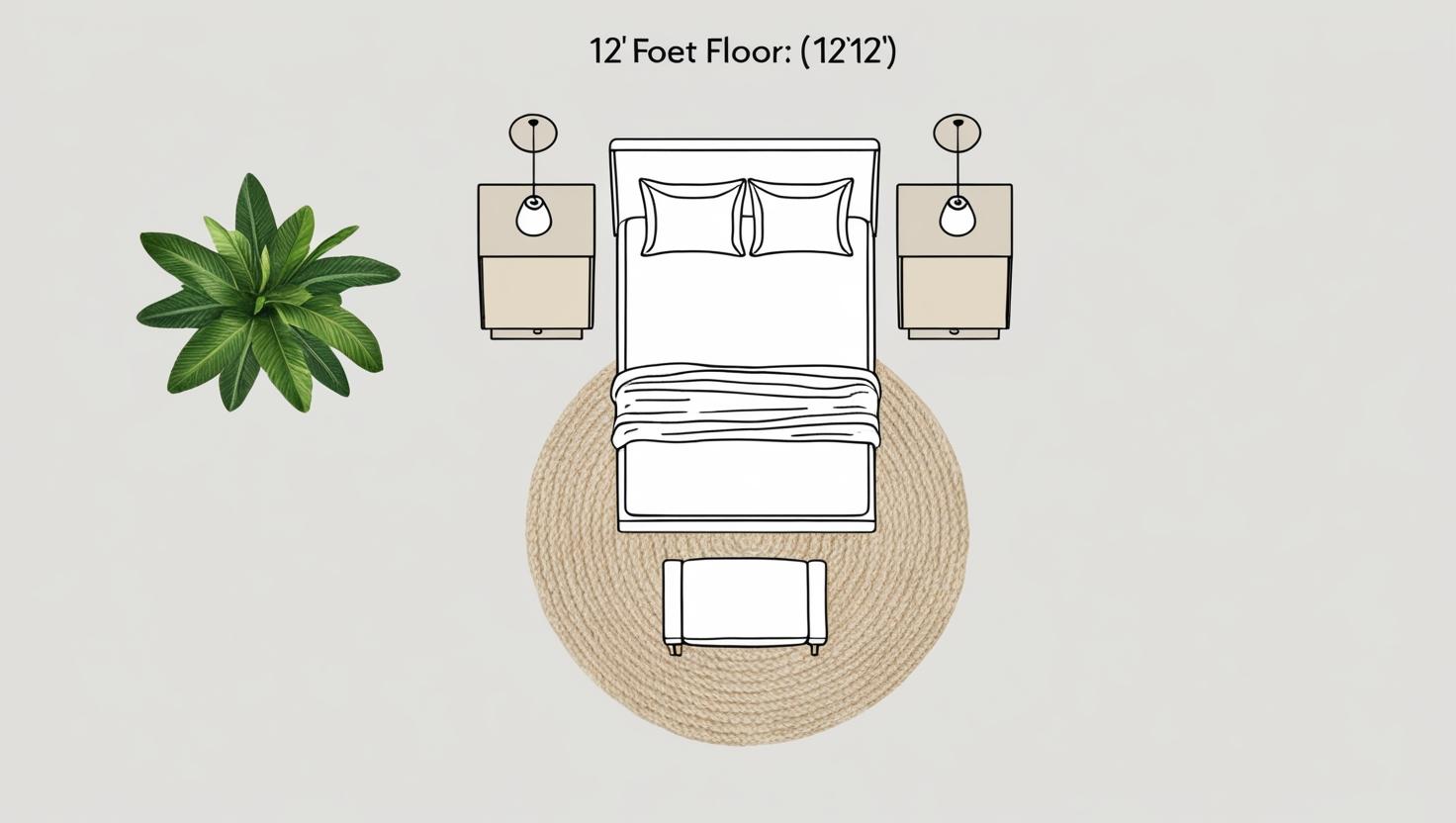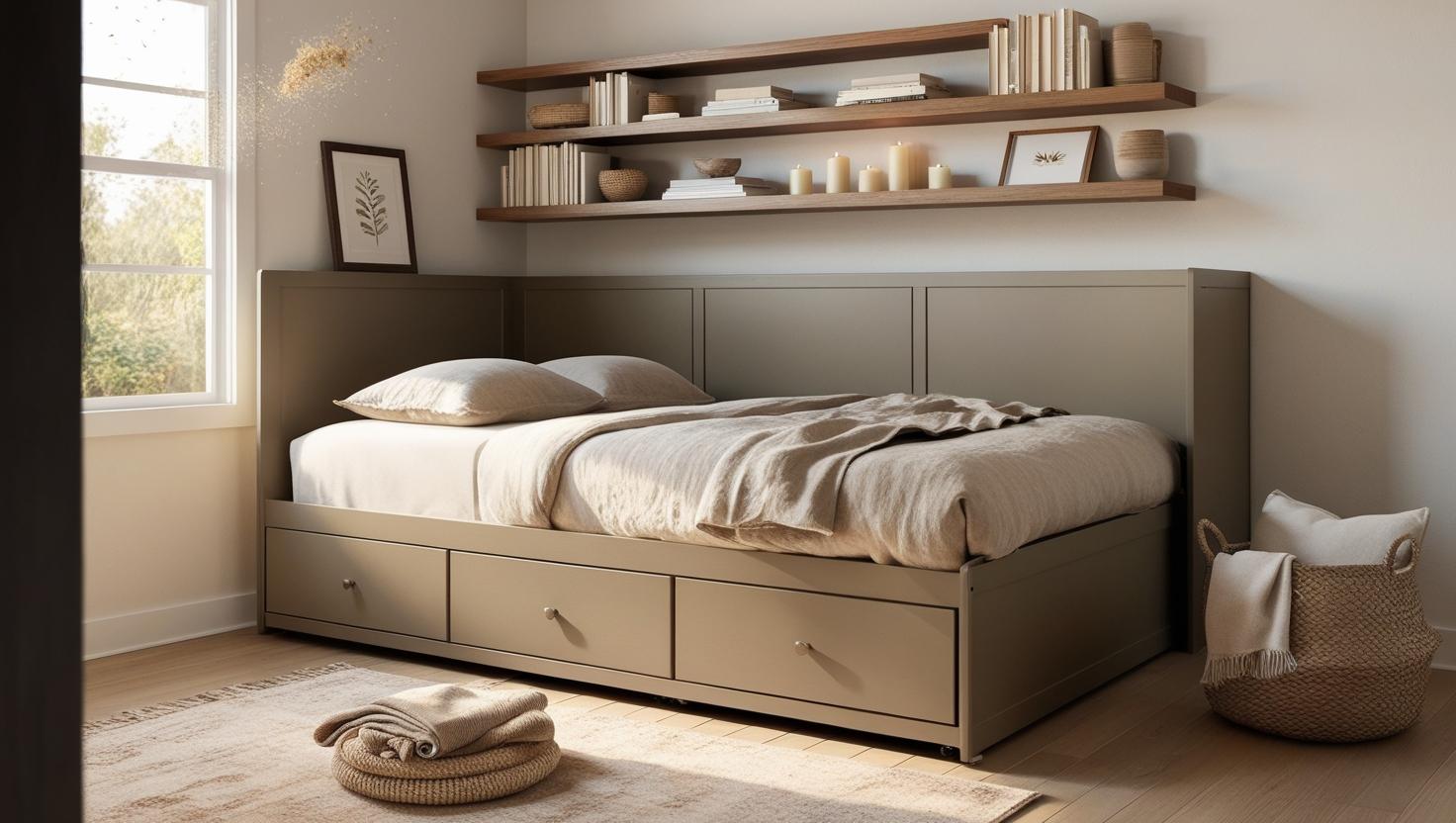Bed Frame Dimensions Guide
Choosing the right bed frame dimensions is crucial for comfort, functionality, and enhancing your bedroom’s aesthetics. Whether you’re outfitting a cozy guest room or a spacious master suite, understanding bed frame sizes ensures a harmonious and restful environment.
Key Takeaways
- Optimal comfort: Prevents cramped sleeping spaces and ensures restful nights.
- Efficient use of space: Essential for maximizing room functionality, especially in smaller areas.
- Enhanced room aesthetics: A well-proportioned bed frame complements your bedroom design.
- Better planning: Choosing the right bed frame dimensions avoids costly mistakes in room setup.
Why Bed Frame Dimensions Matter
A bed frame does more than support your mattress; it defines the room’s layout and flow. Selecting the appropriate size ensures:
- Comfortable movement: Avoids stubbed toes and cramped pathways.
- Balanced design: Harmonizes with other furniture pieces and room proportions.
- Functional space: Allows for additional furnishings like nightstands and dressers.
Nothing disrupts relaxation like navigating around an oversized bed. A correctly sized frame makes your room feel open and inviting, enhancing your overall comfort.

Understanding Bed Frame Dimensions
While mattress sizes are standardized, bed frame dimensions can vary based on design and style. Here’s a comprehensive guide:
| Mattress Size | Mattress Dimensions (inches) | Typical Bed Frame Dimensions (inches) |
|---|---|---|
| Twin | 38″ x 75″ | 40″–43″ x 77″–80″ |
| Twin XL | 38″ x 80″ | 40″–43″ x 82″–85″ |
| Full | 54″ x 75″ | 56″–59″ x 77″–80″ |
| Queen | 60″ x 80″ | 62″–65″ x 82″–85″ |
| King | 76″ x 80″ | 78″–81″ x 82″–85″ |
| California King | 72″ x 84″ | 74″–77″ x 86″–89″ |
Note: Bed frames often add 2–5 inches to mattress dimensions due to design elements like headboards or footboards.

Choosing the Right Bed Frame for Your Room
Room Size Recommendations
| Room Size (sq. ft.) | Recommended Bed Size |
|---|---|
| Up to 100 | Twin or Twin XL |
| 100–200 | Full or Queen |
| 200+ | King or California King |
Considerations:
- Walking space: Aim for at least 2 feet of clearance around the bed.
- Ceiling height: Important for canopy or four-poster beds.
- Additional furniture: Account for nightstands, dressers, and seating.
Planning a bedroom makeover? Combining smart frame sizing with layout strategies can transform your space. Explore how ancient wisdom meets modern design in our post on Feng Shui principles for bedroom layout.
Types of Bed Frames and Their Impact on Dimensions
Platform Beds
Sleek and modern, platform beds sit low to the ground and often match mattress dimensions closely, making them ideal for smaller rooms.
Sleigh Beds
With their curved headboards and footboards, sleigh beds add elegance but require more space due to their design.
Canopy Beds
Featuring posts at each corner, canopy beds make a statement but need rooms with higher ceilings and ample space.
Storage Beds
Equipped with drawers or compartments, storage beds are functional but add bulk, requiring more room for accessibility.
Common Misconceptions About Bed Frame Sizes
Myth: All bed frames are the same size as their corresponding mattresses.
Reality: While mattress sizes are standardized, bed frame dimensions can vary based on design, material, and additional features. Always check the specific measurements before purchasing.
It’s easy to assume that buying a “queen frame” means it’ll fit your queen mattress perfectly. But differences in construction—like thick upholstery, built-in storage, or decorative headboards—can change the footprint significantly.

Final Thoughts
Selecting the right bed frame dimensions is a blend of understanding your space, needs, and style preferences. By considering room size, frame type, and additional features, you can ensure a comfortable and aesthetically pleasing bedroom setup.
For more insights on optimizing your bedroom space, check out our Ultimate Guide to Bedroom Layouts and Top 10 Space-Saving Furniture Ideas.
FAQ
- What is the standard height of a bed frame?
- Most bed frames are between 8 to 18 inches tall. Combined with the height of your mattress, your total bed height can be between 16 to 30 inches tall. Ideally, your bed should be just tall enough so when you’re sitting at the edge of it, your feet are flat on the floor. This is for ease of use, particularly for individuals with limited mobility and the elderly. Source
- Do bed frames come in standard sizes?
- Yes, bed frames are typically designed to match standard mattress sizes: Twin, Twin XL, Full, Queen, King, and California King. However, the actual dimensions of bed frames can vary slightly based on design and style. Source
- Can I use a queen mattress on a full-size bed frame?
- No, a queen mattress (60″ x 80″) is larger than a full-size bed frame (typically 56″–59″ x 77″–80″). Using a mismatched frame can lead to inadequate support and potential damage to the mattress.
- How much space should I leave around my bed?
- It’s recommended to have at least 2 feet of clearance on all sides of the bed to allow for easy movement and access to other furniture.
- Are there bed frames larger than a California King?
- Yes, there are oversized bed frames like the Alaskan King (108″ x 108″), Wyoming King (84″ x 84″), and Texas King (80″ x 98″). These are less common and require spacious rooms. Source
Related Reading from Cozy Bed Quarters
Other Reading We Found Popular























